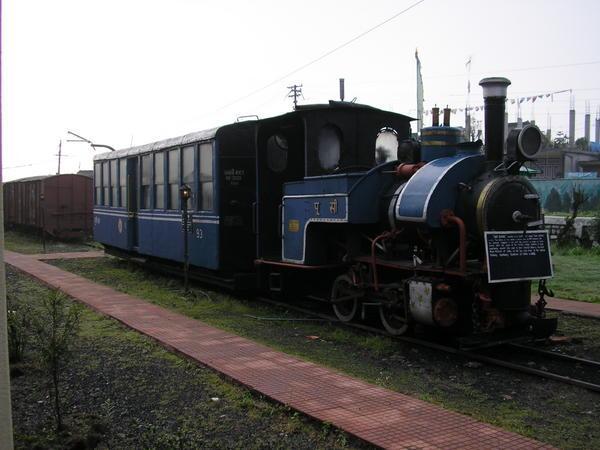Darjeeling Toy Train

Remember Bollywood superstar of yesteryears, Rajesh Khanna, in a jeep, singing the super hit number mere Sapno ki rani as Sharmila Tagore watches on from a train in the 1969 blockbuster Aradhana? Now, try recalling the more recent song kasto maja from Saif Ali Khan & Vidya Balan starrer Parineeta which was yet again on a train. What is common between the two songs or rather two trains is that they were toy trains and that also Darjeeling Toy Trains.
For those who have seen the songs, it is easy to understand why a trip aboard the Darjeeling toy train should not be missed. However, for those who have not seen them and are looking for a genuine reason for taking up a journey on this route, well here it is. The beautiful atmosphere of the hilly terrain through which the train traverses is extremely refreshing and relaxing. In fact, it was the bewitching beauty of the place that inspired Mr. Franklin Prestage (a representative of East Bengal Railway Company) to lay down a train line between Darjeeling and Siliguri back in the mid 19th century.
So, if you are yearning to slow down the pace of your life and enjoy life at its most relaxed self, then a trip to the Darjeeling Toy train is your solution. The toy train, twisting its way up from Siliguri to Darjeeling in the East Indian state of West Bengal, is meant exactly for souls like you who do not hurry to finish off their journey. Rather what they want and do is to enjoy the journey itself.
The Splendid Route
A marvelous journey awaits you in the Darjeeling Toy Train which runs on a 2 feet gauge for a distance of 86 km. The entire journey is covered in around 71/2 hours with a maximum of 15 kmph.
The scenery that greets you ranges from the dense jungles to tea plantations. Sukna, the first station after the commencement of the journey, has trees of sal and teak along with purple bougainvillea, red poinsettia, and moderate purple orchids creating a riot of colors for you. From Sukna, the actual climb begins. Steep gradients and curves mark the route all through.After crossing Chunabhati, Tung Chutlinkpur, and Jorebunglow, you reach Ghoom. At a height of 2257.65m, you are now at the second-highest railway station in the world that is accessed by a steam locomotive. A 6 km downhill journey from here brings you to your final destination, Darjeeling.
A unique feature of this route is that wherever there is a lack of clearcut path due to the steep gradient, the climb proceeds through reverses and loops. In fact, there are as many as six reverses and 3 loops in the entire journey. Moreover, there are also 5 important and 498 less important bridges along with 177 unmanned level crossing routes through which the train traverses.
What will also strike you throughout your journey from Siliguri to Darjeeling is that the track runs almost on the same alignment as the Hill Cart road. In fact, they also cross each other a number of times, 150 times to be a bit more precise. This gives you an opportunity to enjoy the movement on the road while sitting in the train. It gives you a feeling as if the whole world is hurrying to complete their job while you are at leisure to be with yourself and your family and enjoy the beauty of life.
The Toy Train
The train that first ran on the track was way too different from what you will see today. It was a mini four-wheeled trolley with canvas and two wooden benches. Moreover, at that point in time, it was also an important source to transport both people and cargo. It was only with the development of a more convenient way to reach Darjeeling that the load on this toy train lessened and it became. As of today, this toy train whistles past its way through scenic beauty with a grace that is adorable.
Take a trip on this train to enjoy the beautiful pleasures it has to offer.